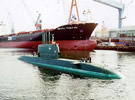The New Iraqi Air Force: F-16IQ Block 52 Fighters
May 01, 2013 18:00 UTCIraq’s military has made significant strides in recent years, and the country is ordering more advanced military equipment to match. A slew of 2008 requests aimed to spend over $10 billion to buy advanced armored vehicles, strengthen its national military supply chain, build new bases and infrastructure for its army, and even buy advanced scout helicopters. Budget shortfalls have stretched out those buys, but that situation is easing, even as Iraq’s air force continues to make progress.
Anxious to complete its transformation and stand fully on its own, Iraq is pushing to begin flying its own fighters within the next couple of years – and is looking to buy American F-16s, rather than the Soviet and French fighters that made up Saddam’s air force.






